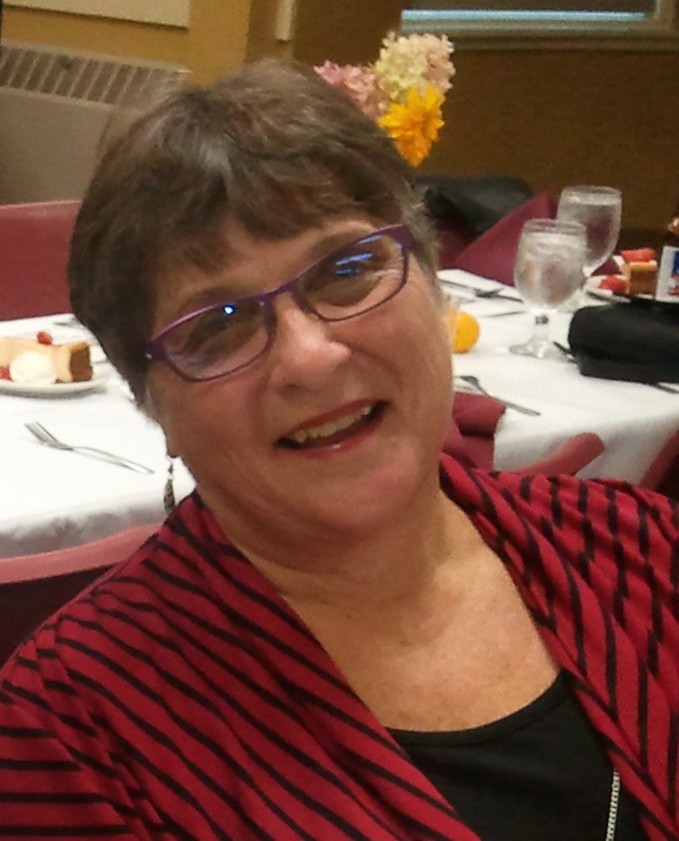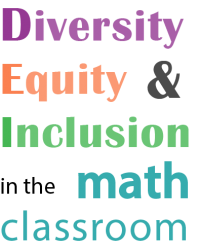Finding the Genius
by Pam Meader
In my previous blog, I mentioned being consumed with watching countless webinars on topics of diversity, equity, and inclusion. Recently, I attended one sponsored by SABES with Dr. Gholdy Muhammad, author of Cultivating Genius, An Equity Framework for Culturally and Historically Responsive Literacy. Her thoughtful words helped me to better understand approaches for addressing diversity, equity, and inclusion in our math classrooms.
Her first approach is to view each student as a genius, and ask ourselves, What do they bring to the math classroom that makes them “shimmer”? So often we have already made assumptions about students by looking at tests scores or allowing our implicit biases on race or ethnicity to influence our perceptions of certain students’ abilities and motivational level. As Dr. Muhammad says, “We won’t start our stories with terms like at risk, defiant, disadvantaged, unmotivated, comparing students to other ethnic groups, etc.”
Educational doctrine in the United States has been designed and shaped by white educators and intellectuals. The work and talent of non-white scholars has historically been ignored, resulting in the marginalization of Black, Indigenous, and other people of color and a biased and incomplete educational experience for all American students. Dr. Carol Anderson, author of White Rage, suggests that an exclusionary history erases the work that everyone helped to make our nation a nation. She uses the analogy of a choir to illustrate this idea. Suppressing all voices is like creating a choir with only sopranos. If the only songs picked are one that sopranos can sing, it leaves a lot of beautiful music ignored. She then says to imagine a choir with basses, tenors, and altos that provides an array of music that all can sing. Likewise, our curricula and lesson plans should strive to be more inclusive.
As Dr. Muhammad warns, we have a system that has not valued all our lives and in fact, has made many to feel inferior and have less options. If our curricula isn’t helping everyone, we have to change. To address these inequities, she suggests following three pillars for developing a culturally relevant education. The first pillar is developing academic success, which she refers to as intellectualism — what students gain as a result of our instruction and learning in the classroom. The second pillar is developing cultural competence, by which students are made aware of their historical roots and feel included in the classroom environment. Developing social-political consciousness is the third pillar. This means bringing the outside world in and applying it to curricula. Math teachers can do this by contextualizing lesson content to include the lives and problems of all our students. As Dr. Muhammad suggests, don’t just teach to students’ math levels — teach to their life levels.
Teachers also need to thinking beyond CCRS standards. Dr. Muhammad suggests that a standard indicates there is a stopping point for learning, when learning should be a pursuit for life. She challenges us to think about five learning pursuits as we plan our lessons:
Cultivating identity. We need to think about how our instruction helps our students learn about themselves and others who are different from them. I suggested some activities in my recent blog with some ‘getting to know you’ activities at the beginning of a course.
Cultivating skills. This is probably the area where we feel the most confident as we ask ourselves how our instruction will help students learn the skills and standards in our math classes. Our task is to expand these skills to be life skills for all of our learners.
Cultivating Intellectualism. We should ask ourselves how our instruction will help all students learn new knowledge and concepts. Dr. Muhammad suggests putting this knowledge into action by understanding new topics, concepts, and ideals.
Cultivating criticality. This means implementing the pursuit of diversity, equity, and inclusion by having our students understand power, inequality, oppression and social justice in relationships. In a math classroom, that might be by looking at data and graphs on various ethnicities or conducting surveys on community problems. One of my algebra students collected data on homeless and marginalized people and housing. From her research, she presented her analysis of the problems to the city council and why housing needs were not being met. I feel this is what Dr. Muhammad means by putting their knowledge into action.
Joy. As a math teacher I want my students to find joy in learning math and find it a viable tool for making decisions and utilization as a life skill. To many of our students, math and joy may seem like exact opposites, but when lessons are crafted with these all five pursuits, true joy can be realized.
For some of us, making our teaching practice and classroom environments more diverse, equitable, and inclusive can seem overwhelming. This is true of any shift in long-held thinking and behavior, and it’s normal to struggle a bit. However, every effort moves us closer to the goal of DEI awareness and implementation. If we start small by first looking inward at our beliefs and biases and taking appropriate steps to change, I believe we can meaningfully grow our teaching toolkit and mindset.

Pam Meader, a former high school math teacher, has taught math in adult education for over 25 years. She is a math consultant for the SABES Mathematics and Adult Numeracy Curriculum & Instruction PD Center professional development initiative for Massachusetts. She helped co-develop Adults Reaching Algebra Readiness (AR)2 with Donna Curry. She is a national trainer for LINCS and ANI (Adult Numeracy Instruction). Pam enjoys sharing techniques for teaching math conceptually from Basic Math through Algebra and has co-authored the Hands On Math series.

